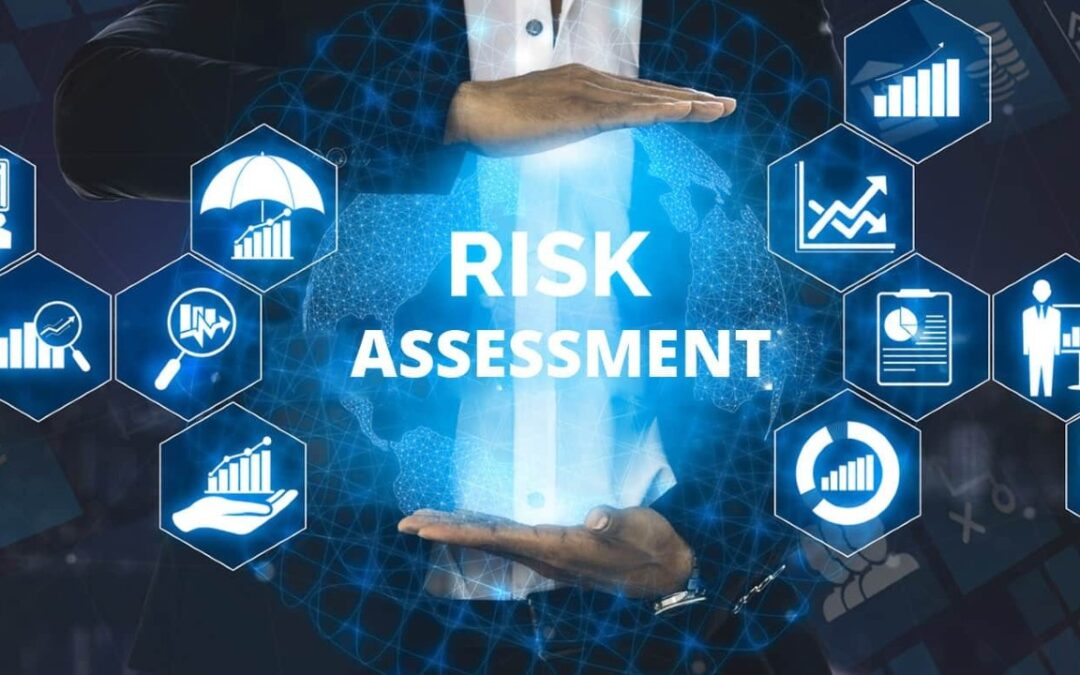
by Sophia Riley | Nov 26, 2025 | CFO, Automation
In today’s fast-moving digital economy, it’s not just financial systems that need modernization—it’s the people and the structures behind them. As CFOs pursue transformation through automation, AI, and integrated platforms, a parallel shift is underway: redefining the finance talent model for the digital era.
Modern finance teams aren’t just number crunchers—they’re analytics translators, technology adopters, and cross-functional collaborators. To stay competitive, organizations need more than upgraded tools—they need future-ready roles, skill sets, and operating models that keep pace with innovation.
Here’s how finance leaders are rethinking workforce strategies to build a truly future-proof finance function.
From Functional Expertise to Cross-Functional Agility
Traditional finance roles were siloed by function—accounts payable, treasury, reporting, etc. But digital transformation demands convergence. Teams are increasingly being organized around end-to-end processes, such as Procure-to-Pay or Record-to-Report, requiring collaboration across departments and a shared understanding of workflows, systems, and data.
Key shifts in structure:
- Cross-functional pods: Temporary or permanent teams combining finance, IT, procurement, and operations talent to support strategic initiatives.
- Process owners: New roles dedicated to overseeing the performance, automation, and governance of key finance processes across systems and stakeholders.
- Digital COEs: Finance Centers of Excellence now include automation specialists, citizen developers, and data modelers supporting broader enterprise enablement.
Elevating Skills: From Manual to Digital Proficiency
The future of finance isn’t about replacing people—it’s about augmenting them. As automation handles repetitive tasks such as reconciliations and journal entries, human effort shifts toward analysis, exception handling, and strategic planning.
Emerging must-have skills:
- Data storytelling: The ability to interpret and communicate insights from dashboards, predictive models, and real-time analytics.
- Tech fluency: Proficiency in modern finance platforms (e.g., Oracle ERP Cloud), RPA tools, and API ecosystems.
- Governance literacy: Understanding of data privacy, audit trails, internal controls, and regulatory frameworks—especially as finance teams become stewards of critical business data.
Finance organizations are investing in reskilling and upskilling through certifications, digital academies, and collaborative programs with IT—often co-led by HR and talent development functions.
Rethinking Roles: The Rise of New Finance Archetypes
As the tech stack evolves, so do the job descriptions. Leading CFOs are actively shaping roles that blend finance acumen with tech enablement.
Examples of new finance archetypes:
- Finance Automation Analyst: Designs and manages bots, workflow automations, and rule-based processes.
- ERP Optimization Manager: Serves as the liaison between finance and IT, helping configure, test, and deploy ERP features and updates.
- Data Governance Lead: Ensures consistent taxonomies, access protocols, and audit-ready documentation across systems.
By creating clear career paths for these hybrid roles, organizations can retain top talent while filling the skill gaps created by digital adoption.
Culture Change: Embedding Digital Mindsets
Even the best tech stack fails without the right mindset. Digital finance leaders are cultivating a growth-oriented, agile culture—one that embraces experimentation, iteration, and continuous improvement.
Key cultural traits of future-ready finance orgs:
- Fail fast, learn faster: Encouraging pilots, A/B testing, and iterative rollouts of automation and analytics initiatives.
- Ownership over oversight: Empowering finance employees to build and refine automation through low-code platforms.
- Shared KPIs: Linking finance performance metrics to broader business outcomes—customer satisfaction, sustainability goals, and operational efficiency.
This cultural transformation requires intentional leadership. CFOs must model digital curiosity, sponsor innovation programs, and reward initiative beyond the confines of legacy scorecards.
Redefining Success Metrics: Measuring the New Finance ROI
To gauge the success of a future-ready finance function, organizations are looking beyond cost reduction. New KPIs emphasize speed, scalability, and strategic contribution:
- Cycle time reduction (e.g., close, procure-to-pay, dispute resolution)
- Automation rate per process
- Data accuracy and accessibility
- Time spent on analysis vs. data gathering
- Employee engagement in digital upskilling initiatives
These metrics aren’t just operational—they’re cultural indicators of how well the finance organization is evolving.
Building Future-Ready Finance, Powered by oAppsNET
At oAppsNET, we understand that modern finance transformation is about more than software. It’s about equipping your people with the tools, training, and structures to thrive in a tech-forward world.
Whether you’re implementing Oracle ERP Cloud, automating intercompany processes, or enabling embedded analytics, our solutions are designed to support the full spectrum of finance evolution—from systems to skill sets.
The future of finance isn’t coming—it’s already here. With the proper support, you’ll be ready for it.

by Sophia Riley | Nov 19, 2025 | CFO, Digital Transformation
Risk is no longer confined to the compliance team. In a climate of rising regulatory scrutiny, cyber threats, and volatile markets, financial controls must be embedded directly into the daily operations of modern finance teams—not layered on as an afterthought.
Today’s CFOs are reimagining risk management not as a reactive reporting function but as a proactive framework that informs every transaction, approval, and decision across the enterprise. From procure-to-pay to close-to-report, every workflow is a potential control point—and every finance leader is now a stakeholder in enterprise risk posture.
The Shifting Risk Landscape for Finance
Historically, financial risk management focused on periodic audits, SOX compliance, and post-mortem reporting. But modern finance teams operate in real-time across increasingly complex environments:
- Multi-entity global operations
- Remote and hybrid workforces
- Automated transaction flows and decentralized approvals
- High volumes of supplier and third-party interactions
- ESG reporting obligations and data privacy regulations
This complexity has increased both the velocity and surface area of risk. CFOs must now ensure that finance systems not only move fast—but move securely.
What It Means to “Embed Controls”
Embedding controls means weaving governance mechanisms—such as approvals, validations, thresholds, and reconciliations—directly into finance workflows, rather than relying on manual checks or disconnected audits. It’s a shift from detection to prevention.
Embedded control strategies include:
- System-enforced segregation of duties (SoD) in ERP and procurement platforms
- Automated tolerance checks for invoice discrepancies and duplicate payments
- Role-based access controls and digital approval chains for spend and reporting
- Audit-ready workflows that maintain full data lineage and time-stamped documentation
- Continuous monitoring of transactional and master data integrity
With these embedded into your processes, governance becomes automatic—not ad hoc.
Technology as the Enabler
Modern ERP systems, financial automation tools, and intelligent workflows make it possible to codify controls into digital processes. Leading platforms now offer:
- Pre-configured control libraries that align with financial regulations (e.g., SOX, IFRS, ESG)
- Real-time alerts and exception workflows that flag anomalies before they escalate
- Workflow automation to enforce consistent policy adherence across business units
- Integrated audit trails that document all actions, decisions, and changes
- Control dashboards that visualize risk posture across finance operations
By embedding these controls into source systems—rather than relying on downstream audit or policy enforcement—CFOs gain real-time visibility and assurance.
Use Cases: Where Controls Deliver Impact
1. Procure-to-Pay (P2P)
Embedding three-way match validations, duplicate invoice detection, and vendor risk scoring directly into the AP process helps prevent overpayments, fraud, and compliance issues.
2. Order-to-Cash (O2C)
Credit controls and pricing validations at the order entry stage reduce revenue leakage and bad debt exposure downstream.
3. Close and Reporting
Automated reconciliations and audit trail capture in close processes reduce reliance on manual spreadsheet checks, ensuring accuracy and speed.
4. Expense Management
Embedded policy enforcement within T&E platforms can prevent out-of-policy claims before submission, not after reimbursement.
5. Contract and Vendor Management
System-driven compliance checks (e.g., W-9 collection, ESG clauses, renewal dates) reduce legal and regulatory exposure across third-party relationships.
Cultural and Organizational Shifts
Embedding controls also requires changes beyond technology—particularly in mindset and ownership. CFOs must champion a finance culture where control and agility coexist.
Key cultural shifts include:
- Shared accountability: Risk is not isolated to audit or compliance—it belongs to every team that touches finance data.
- Proactive thinking: Teams anticipate risk scenarios rather than reacting to failures.
- User-centric design: Controls are built to be intuitive and non-disruptive, encouraging adoption.
- Continuous improvement: Controls are regularly reviewed and refined based on new threats, audit findings, or business changes.
When embedded correctly, controls don’t slow the business down—they accelerate it by building trust in data, decisions, and outcomes.
The Strategic Payoff: From Defense to Differentiator
A control-conscious finance function doesn’t just avoid penalties and misstatements—it enables stronger strategic execution:
- Faster closes with fewer restatements
- Reduced audit costs and remediation effort
- Higher stakeholder confidence in reported results
- Increased automation and reduced manual oversight
- Readiness for IPO, M&A, or ESG-related scrutiny
Ultimately, controls become a lever for growth, not just compliance. When embedded into every workflow, they elevate finance from operational watchdog to strategic enabler.
At oAppsNET, we help enterprise finance teams design and deploy embedded control frameworks tailored to their unique operational and compliance needs. Whether you’re implementing segregation of duties in Oracle, configuring automated audit trails, or scaling real-time governance across global entities, our experts bring the technology fluency and business acumen to hardwire risk awareness into your finance DNA—from day one.

by Sophia Riley | Nov 13, 2025 | Artificial Intelligence, CFO
In today’s volatile business environment, static budgets and annual forecasts no longer provide the resilience organizations need. Economic shocks, supply chain disruptions, regulatory shifts, and rapid market swings demand faster, more iterative approaches to planning. In response, leading finance organizations are shifting toward continuous forecasting—a dynamic planning model enabled by automation, AI, and real-time data integration.
This evolution is more than a tactical upgrade. It reflects a fundamental redefinition of the finance function’s role: from backward-looking budget gatekeeper to proactive business partner. For CFOs, embracing continuous forecasting isn’t just a modernization effort—it’s a competitive necessity.
The Shortcomings of Traditional Forecasting Models
Legacy forecasting frameworks rely heavily on quarterly or annual cycles built atop manual spreadsheets and historical data. While this approach can support basic planning, it fails to keep pace with real-world volatility and decision-making needs.
Key limitations include:
- Lagging insights: By the time forecasts are compiled, conditions may have shifted dramatically.
- Manual workflows: Spreadsheets and siloed systems introduce delays, errors, and version control issues.
- Static assumptions: Traditional forecasts often bake in outdated scenarios, limiting flexibility.
- Limited collaboration: Finance teams struggle to align forecasts with fast-moving operational inputs from sales, supply chain, and business units.
These constraints can lead to poor visibility, reactive decision-making, and missed opportunities to optimize performance.
What Is Continuous Forecasting?
Continuous forecasting is a real-time, iterative process that replaces rigid calendar-based planning cycles with rolling projections, scenario analysis, and embedded intelligence. Rather than relying solely on historicals, this approach integrates current operational, financial, and external data into live models that evolve as conditions change.
Hallmarks of continuous forecasting include:
- Rolling forecasts updated monthly or weekly
- Predictive models driven by machine learning
- Automated data ingestion across systems (ERP, CRM, supply chain, etc.)
- Cross-functional collaboration between finance and business stakeholders
- Scenario planning capabilities to stress-test different outcomes
The result is a forward-looking, agile planning environment that equips decision-makers to respond quickly and confidently.
The Role of AI and Automation in Forecasting
Technologies like artificial intelligence, robotic process automation (RPA), and cloud-native planning tools are central to enabling continuous forecasting at scale.
1. AI-Driven Forecast Accuracy
Machine learning models can analyze vast quantities of structured and unstructured data to identify patterns, detect anomalies, and generate more accurate projections. AI improves forecast precision by continuously learning from new inputs—whether it’s updated sales pipelines, inventory levels, or macroeconomic trends.
2. Real-Time Data Integration
Automation connects disparate data sources and synchronizes them into a centralized forecasting platform. This eliminates manual data entry, reduces errors, and allows for on-demand updates based on live business conditions.
3. Scenario Modeling
AI-enabled tools support “what-if” modeling across hundreds of variables, allowing finance teams to simulate the impact of demand shifts, pricing changes, FX fluctuations, or supply delays. These capabilities provide critical insight into risk exposure and response strategies.
4. Workforce Productivity Gains
Automating repetitive forecasting tasks frees finance professionals to focus on higher-value analysis and business partnering. This shift in time allocation supports more strategic involvement from the finance team.
How Continuous Forecasting Enables Resilience
Modern finance teams face increasing pressure to navigate uncertainty while preserving profitability. Continuous forecasting addresses this mandate by delivering:
- Enhanced agility: Rolling forecasts allow organizations to pivot quickly in response to disruption.
- Improved cash and resource planning: Real-time visibility into inflows, outflows, and working capital needs supports stronger liquidity management.
- Data-informed decision-making: Leaders can act on accurate, up-to-date forecasts rather than lagging reports.
- More substantial alignment with operations: Continuous models integrate finance more deeply into enterprise decision-making.
- Reduced forecast variance: Frequent iteration and real-time data improve reliability and accountability.
These benefits aren’t just theoretical—they’re becoming operational requirements for finance organizations striving to stay competitive.
Shifting Finance Culture and Capabilities
Transitioning to continuous forecasting requires more than technology. It calls for a reimagined finance culture that values agility, collaboration, and data fluency.
Key shifts include:
- From spreadsheet jockeys to strategic analysts: Finance talent must evolve to interpret models, assess scenarios, and drive action.
- From siloed to integrated: Cross-functional engagement with sales, marketing, operations, and IT becomes essential.
- From periodic to perpetual: Forecasting becomes part of the daily fabric of decision-making, not a once-a-quarter event.
CFOs must lead this transformation by championing change management, investing in upskilling, and aligning teams around shared KPIs and performance goals.
Getting Started: Building the Foundation
Organizations can take several practical steps to begin the shift toward continuous forecasting:
- Assess the current state: Identify pain points in the existing forecasting process, such as latency, error rates, and variance from actuals.
- Digitize the core: Ensure foundational systems (ERP, procurement, sales) are integrated and standardized.
- Invest in modern planning tools: Adopt cloud-based platforms that support automation, real-time updates, and collaboration.
- Embed predictive analytics: Leverage AI to enrich forecasts with external and operational data.
- Foster a data-driven mindset: Train finance teams to interpret, question, and communicate data insights effectively.
With proper groundwork, continuous forecasting becomes a sustainable, scalable advantage.
Looking Ahead: Finance as a Driver of Enterprise Agility
As organizations brace for continued uncertainty, finance must lead the charge toward more adaptive, forward-looking planning. Continuous forecasting empowers CFOs to serve not just as stewards of capital, but as architects of agility.
By embracing digital tools, predictive analytics, and new ways of working, finance can transform forecasting from a burdensome task into a strategic function—one that delivers clarity when it matters most. Reach out to oAppsNET today to learn more.

by Sophia Riley | Nov 11, 2025 | Automation, CFO
As finance functions evolve from compliance-driven cost centers into strategic enablers, the demand for clear, contextual storytelling around financial results has never been greater. Stakeholders—from boards to regulators to investors—no longer settle for rows of numbers. They want interpretation, clarity, and foresight.
Narrative reporting—the structured articulation of financial results, operational context, and future outlook—has become a core responsibility for modern CFOs. But traditional approaches to producing these reports are unsustainable. Manual drafting, fragmented data sources, and last-minute reconciliations introduce delays and risk.
To keep pace with real-time expectations and regulatory rigor, leading finance teams are turning to narrative reporting automation as a critical component of their digital reporting strategy.
While financial statements and KPIs provide the “what,” narrative reporting explains the “why.” It enables CFOs to:
- Communicate business context behind performance metrics
- Provide forward-looking insights for internal and external stakeholders
- Ensure consistency and accuracy across board decks, investor calls, and earnings reports
- Strengthen audit and compliance alignment with transparent commentary
Done well, narrative reporting supports everything from market perception to executive decision-making. But when it’s handled manually, it becomes a bottleneck.
The Problem with Manual Narrative Reporting
CFOs overseeing global operations often face a slew of challenges when producing narrative reports:
- Data silos between finance, operations, and business units
- Version control issues from multiple contributors working on shared documents
- Time-intensive copy-paste workflows across Excel, Word, and PowerPoint
- Increased compliance risk due to inconsistencies or human error
These inefficiencies create reporting lag, reduce analytical capacity, and weaken stakeholder confidence—especially when speed, transparency, and data integrity are non-negotiable.
What Narrative Reporting Automation Looks Like
Narrative reporting automation combines structured data, workflow tools, and templated logic to generate dynamic, commentary-rich reports across the organization.
Key capabilities include:
1. Data Integration
Automation tools pull live financial and operational data from ERPs, EPMs, and data warehouses—removing the need to manually extract and format figures.
2. Templated Language Logic
Standardized templates automatically generate commentary based on predefined business rules (e.g., “Revenue increased X% due to Y”). This ensures consistent phrasing and tone while allowing for custom edits.
3. Collaboration and Version Control
Integrated approval workflows and audit trails reduce the risks associated with multi-author reporting processes. Finance, strategy, and compliance teams can collaborate in real time.
4. Dynamic Updates
As underlying data changes (e.g., forecast updates or budget revisions), narrative sections automatically refresh, ensuring reports reflect the latest information.
Strategic Benefits for CFOs
Automating narrative reporting isn’t just a time-saver—it’s a strategic enabler. Here’s how:
Improved Speed and Accuracy
Reports that once took weeks to assemble can now be generated in days or hours. Real-time syncing ensures commentary is always aligned with the latest figures.
Better Internal Alignment
Finance teams can deliver consistent messaging across internal scorecards, leadership dashboards, and cross-functional reviews, thereby supporting better operational cohesion.
Stronger External Reporting
Investor relations teams benefit from faster access to high-quality narratives that support earnings calls, filings, and shareholder communications.
Embedded Governance
Automated workflows embed controls around authorship, approvals, and data lineage—ensuring audit-readiness and regulatory compliance.
Freed Analyst Capacity
Finance professionals spend less time formatting and more time analyzing, advising, and scenario-planning.
Use Cases: Where Narrative Reporting Adds Value
CFOs are deploying narrative reporting automation across a range of use cases, including:
- Board reports and monthly business reviews
- Investor relations commentary for earnings calls
- Regulatory filings requiring narrative disclosures
- Executive scorecards and KPIs with contextual summaries
- ESG disclosures aligned with financial performance metrics
By unifying quantitative data with qualitative context, these reports deliver a fuller, more nuanced view of financial health.
Integration with Existing Tech Stacks
Narrative automation platforms are designed to integrate with existing finance tools—including:
- ERP systems for actuals and financial data
- EPM platforms for forecasts and plans
- Disclosure management tools for regulatory reporting
- Collaboration suites (e.g., Microsoft 365, Google Workspace)
The goal is not to replace current tools, but to enhance them with automated insight delivery and cross-functional storytelling capabilities.
oAppsNET Insight: Why It Matters to Modern Finance Teams
At oAppsNET, we understand that narrative reporting isn’t just about communication—it’s about trust, alignment, and strategic enablement. Whether your team is modernizing board reporting or enhancing ESG commentary, automation is the bridge between data and decision.
With the exemplary digital architecture, narrative reporting becomes less of a chore and more of a value multiplier.
Reporting That Moves the Business Forward
CFOs are under pressure to provide not just accurate financials but also actionable insights. Narrative reporting sits at the intersection of these demands—where automation, governance, and storytelling meet.
By embracing automation, finance teams can elevate the quality, consistency, and speed of their narrative outputs, freeing up time for the analysis and guidance that truly move the business forward.

by Sophia Riley | Nov 6, 2025 | CFO, Automation
For years, treasury has been perceived as the operational core of finance—responsible for managing cash, mitigating risk, and ensuring liquidity. But in today’s increasingly volatile economic landscape, expectations of the treasury are shifting. No longer confined to back-office functions, treasury teams are emerging as strategic enablers, tasked with optimizing capital allocation, supporting enterprise resilience, and informing high-impact decisions at the executive level.
As CFOs strive to unlock new efficiencies and align financial strategy with organizational goals, treasury is rapidly becoming a central player in enterprise performance. This evolution is gaining momentum through the adoption of automation, data intelligence, and cross-functional integration.
Traditionally, treasury has been reactive, focusing on daily cash positioning, short-term forecasting, and transaction execution. While these remain core responsibilities, modern finance leaders are steering treasury towards a more proactive, insight-driven stance.
Several factors fuel this transformation:
- Market Volatility: Disruption—geopolitical, environmental, or macroeconomic—has made liquidity management more complex and mission-critical. Static strategies cannot support agile decision-making.
- Globalization: Multi-entity operations and global banking networks require sophisticated cash visibility and currency risk management.
- Digital Acceleration: Real-time data and analytics are now table stakes. Treasury is expected to deliver on-demand insights across liquidity, risk, and capital utilization.
Modern Treasury Priorities in a Strategic Context
As the function evolves, treasury teams are being measured by more than operational accuracy. Key areas of strategic enablement include:
1. Enterprise Liquidity Visibility
Treasury must now provide a consolidated, real-time view of global liquidity across all banks, entities, and currencies. This visibility supports better decision-making around:
- Working capital allocation
- Strategic investments
- Debt and capital structure optimization
2. Risk Forecasting and Scenario Planning
Beyond managing FX and interest rate exposure, treasury leaders are expected to contribute to enterprise risk planning. Using AI-enabled scenario modeling, treasury can simulate liquidity shocks and stress-test capital buffers across different macroeconomic conditions.
3. Cash Flow Forecasting for Strategy Execution
Treasury’s forecasts are no longer standalone reports—they feed directly into:
- M&A modeling
- Capital expenditure planning
- Shareholder return strategies
- ESG financing initiatives
4. Bank Relationship and Fee Optimization
With interest rate fluctuations and rising transaction costs, the treasury’s ability to optimize banking relationships, negotiate fees, and evaluate counterparty risk is vital for preserving enterprise value.
Technology as an Enabler: Treasury Automation in Action
The rise of treasury management systems (TMS), cash visibility platforms, and bank connectivity APIs has enabled finance teams to reduce manual effort and integrate treasury data into broader financial ecosystems.
Automation enables:
- Real-time reconciliation and automated bank feeds
- Centralized cash positioning across geographies and accounts
- Rules-based cash pooling and in-house banking optimization
- Workflow-driven compliance and audit readiness
When embedded with ERP and FP&A tools, treasury automation also supports continuous forecasting and deeper alignment with the Office of the CFO.
Treasury’s Expanding Role in Cross-Functional Alignment
Strategic treasury leaders now sit at the table alongside procurement, operations, and IT. Key areas of collaboration include:
- Procure-to-Pay (P2P): Ensuring that payment timing aligns with working capital objectives.
- IT & Security: Supporting secure, API-based bank connections and compliance with cyber-risk standards.
- Tax & Legal: Navigating global cash repatriation, transfer pricing, and intercompany funding models.
This cross-functional approach turns treasury into a strategic advisor—not just a cash manager.
KPIs for the Modern Treasury Function
As the treasury’s mandate broadens, so too must its metrics. Performance is increasingly tracked using:
- Cash Conversion Cycle (CCC) improvement
- Working capital ROIC (Return on Invested Capital)
- Forecast accuracy at entity, region, and consolidated levels
- Treasury cost-to-value ratio
- Bank fee savings and counterparty diversification metrics
These KPIs help finance leaders measure the treasury’s impact on both operational efficiency and strategic agility.
A New Mandate for CFOs and Treasury Teams
As capital markets tighten and operating margins come under pressure, the ability to dynamically manage liquidity, risk, and capital allocation becomes paramount. CFOs must look to treasury not just for control, but also for enablement.
By investing in automation, embedding treasury into enterprise workflows, and empowering teams with the right insights, finance leaders can elevate treasury from a functional necessity to a competitive differentiator.
oAppsNET understands the importance of this shift. Our expertise in finance transformation and systems integration helps modern CFOs unlock the full potential of their treasury teams—turning real-time visibility into strategic value.





